Tourism Industry Assignment PDF
21 Pages4119 Words48 Views
Added on 2021-05-31
Tourism Industry Assignment PDF
Added on 2021-05-31
ShareRelated Documents
Tourism Industry 1Advantages and Disadvantages of Using Social Networks in Businessby Course: Tutor: University:Department: Date:
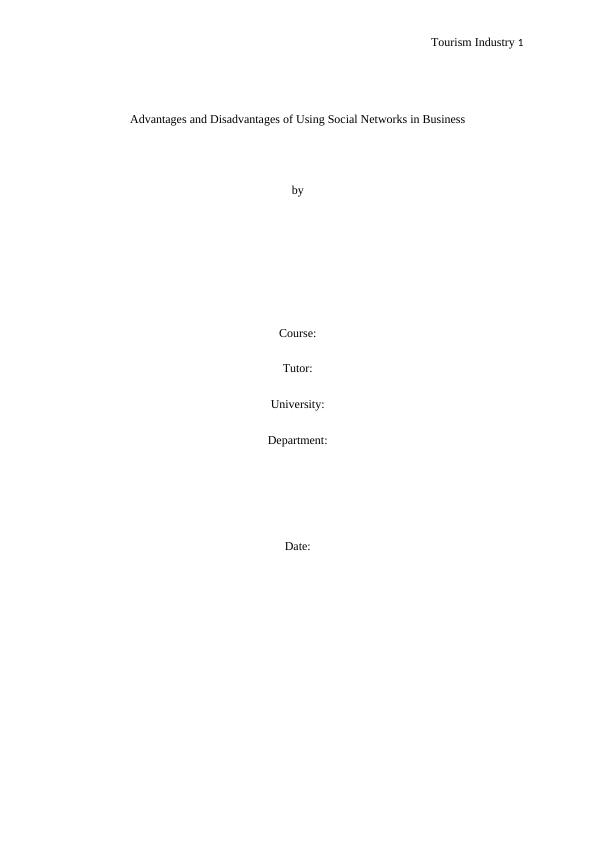
Tourism Industry 2Table of ContentsTable of Contents.......................................................................................................................21. INTRODUCTION...............................................................................................................32. PROJECT OBJECTIVE......................................................................................................33. PROJECT SCOPE..............................................................................................................34. LITERATURE REVIEW....................................................................................................55. RESEARCH QUESTION...................................................................................................85.1 Primary Question...........................................................................................................85.2 Secondary Questions........................................................................................................86. RESEARCH METHODOLOGY........................................................................................96.1 Qualitative........................................................................................................................96.2 Quantitative......................................................................................................................96.3 Validity and Reliability..................................................................................................106.4 Research Limitations......................................................................................................106.5 Research Plan.................................................................................................................107. CONCLUSION..................................................................................................................11References................................................................................................................................12Appendices...............................................................................................................................16Appendix 1: Questionnaire...................................................................................................16
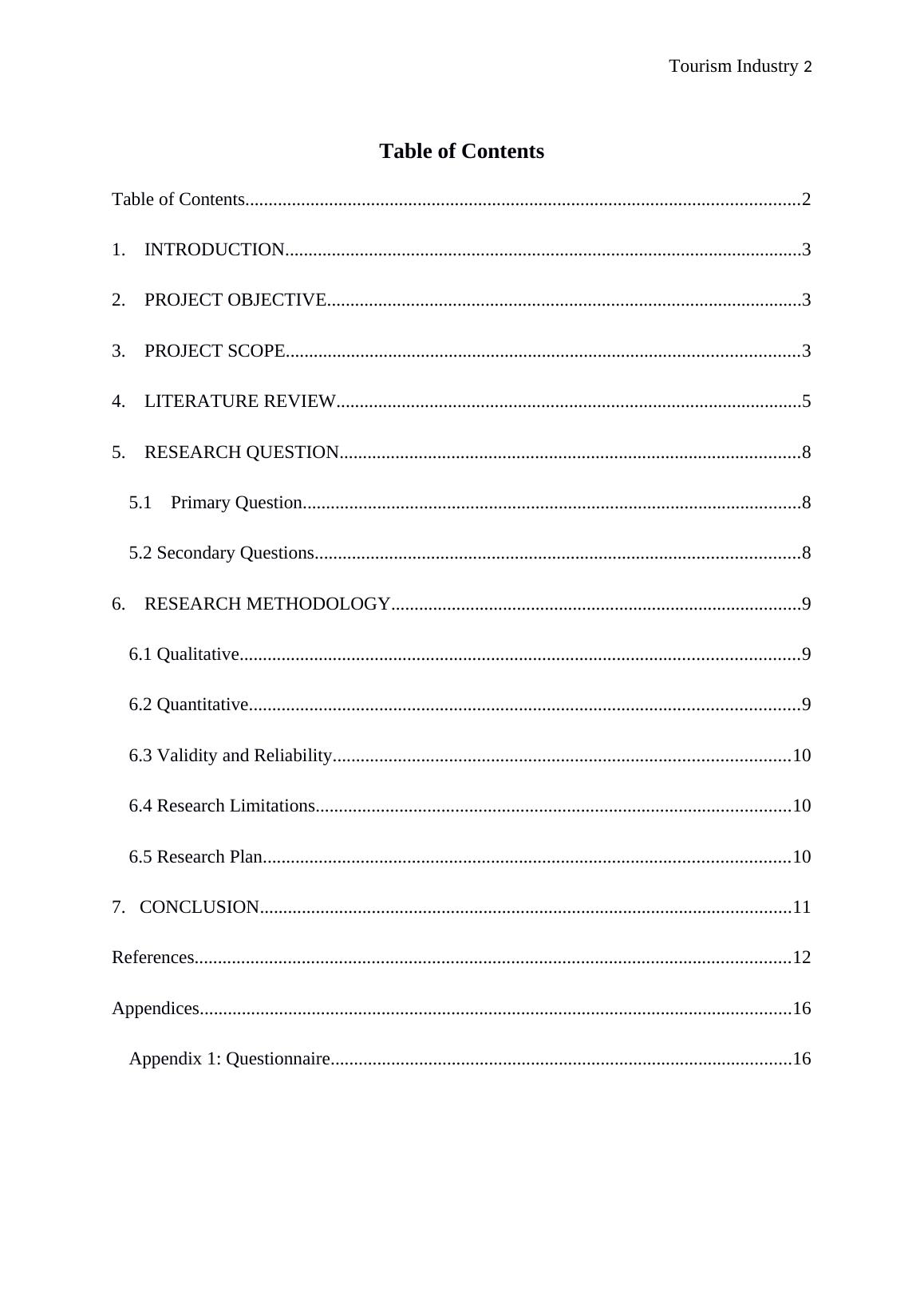
Tourism Industry 31. INTRODUCTION Social media tools are altering the manner in which people interact. Technological advances have improved accessibility to social media, letting it become a part of daily life and routines to people (Agresta, Bough, and Miletsky 2010). Social media has no specific definition agree upon with most of the researchers and scholars due to the emergence of other concepts alongside social media such as Web 2.0 (Morgado et al. 2011). However, Agresta, Bough andMiletsky (2010) refers social marketing as a term for the combination of multiple instrumentsand applications that forms the social capability of the web. Agresta and Bough (2010) definesocial media marketing as the applications based on the internet that transmit consumer generated content related to past experiences. Both individuals and organizations create and interchange information and in one-on-one talks. The exchange platforms exist in different forms such as blogs, social networks, video and image sharing, among others. The most common ones include Facebook, Myspace, YouTube, Twitter, etc. (Buted et al. 2014). The tourism industry has not been left behind, and thus several studies have recognized the significance of Web 2.0 in the hospitality sector (Xiang and Gretzel 2010; Gretzel and Yoo 2013, Ruzic and Bilos 2010). The objective of this study is to identify the advantages and thedisadvantages of the social media experienced by the Tourism businesses in Australia. 2. PROJECT OBJECTIVEThe goal of this research is to ascertain the advantages and disadvantages of the use of social media in the tourism industry with a specific focus on Australia. Additionally, this paper will examine the social media channels used in tourism business and customer habits in the tourism sector.3. PROJECT SCOPEThe project’ scope is to explore the advantages and disadvantages of the use of social media in the tourism industry of Australia businesses. Tourism establishments in Australia will be
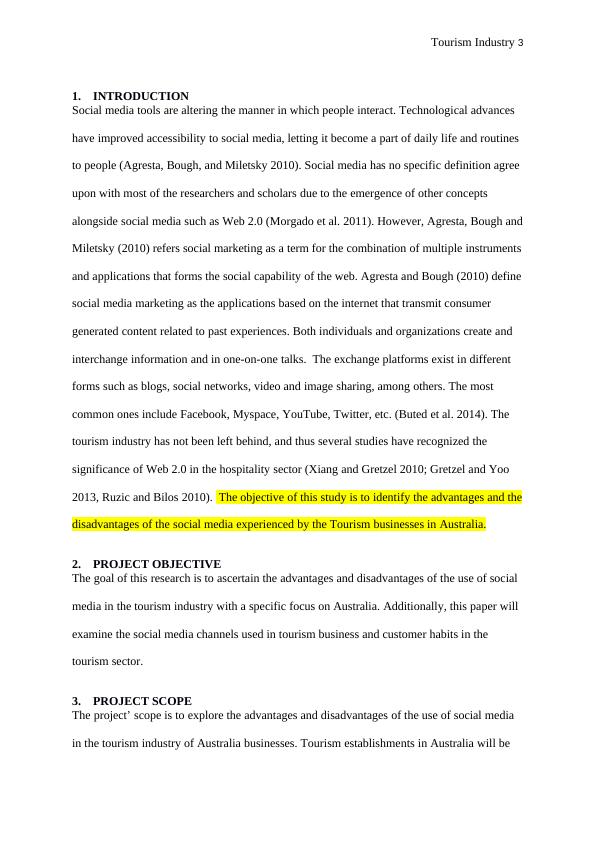
Tourism Industry 4used as a case study because of the emerging integration of social media marketing in the Australia tourism ndustry. The study will critically examine the use of social media marketing strategy by highlighting the opportunities and challenges. Additionally, the dynamic global market will also be assessed in the light of using social media platforms for customer relationship management. The researcher will therefore, systematically review and discuss relevant literature materials to develop the background information of the topic under study.
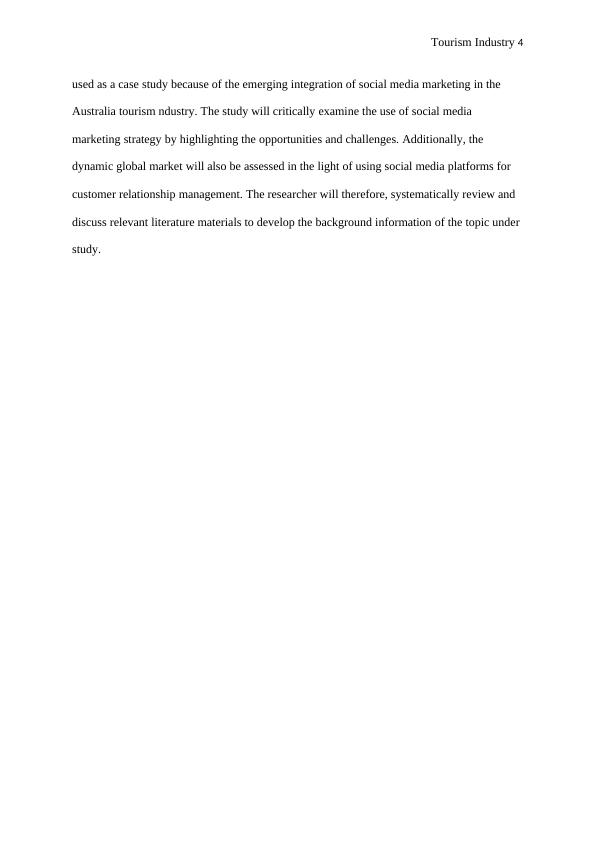
Tourism Industry 54. LITERATURE REVIEW Scuotto et al. (2017) describe social media as a combination of online applications that permitthe users namely customers, businesses or entrepreneurs to link and communicate with eachother. Kang et al. (2014) also note that social media brings the effectual reward ofencouraging active user involvement. From the perspective of business. Kim et al. (2015)content that social media has transformed the business strictures via internet resource, byemploying it as an instrument to introduce products and services and marketing them forsales. Similar concepts are shared by Keinänen and Kuivalainen (2015) who observes that thepresent business market regards social media as a broad foundation in meeting the social andbusiness needs at the same time. The authors justify their conclusion through the increasinguse of social platforms for networking globally. The development of social media has takenplace through the rise and growth of the Web 2.0, on the other hand, it is also contested thatWeb 2.0 and social media are entirely diverse ideas (Dalip et al. 2017).The emergence and development of social media networks have benefited businesses throughthe implementation of social media marketing strategy. However, its effectiveness depends more on the content and context of communication. According to Yoo et al. (2016), social media marketing strategy encompasses the execution of the social cycle, reduces costs of business operations and thus fostering business growth. Social media marketing strategy plays significant roles in business such as content marketing of products or services, making sales, encouraging public relations, introducing value offers, widening the social cycle and organizational profitability, fostering customer feedback communication, and thus leading to general business performance (Costanza 2017). Several studies have been carried out on the advantages of adopting social media marketing (SMM) strategy in businesses. Kim and Ko (2012) surveyed the benefits of embracing social media marketing in luxury products and found out that it increased interactions between firms
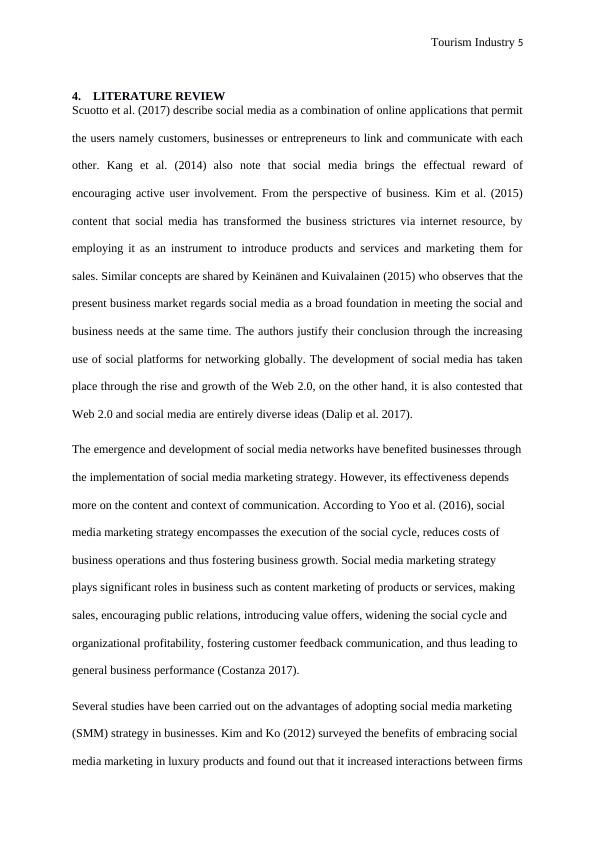
Tourism Industry 6and their customers enabling them to customize products and services to meet customer needs, and accomplishing useful word of mouth (WOM) marketing. Furthermore, research has shown that social media marketing fosters good customer relationship, influences customer purchase intentions, and generates brand loyalty. De Vries et al. (2012) revealed that social media was the best medium to promote associations between customers and products or services. This is because social media marketing offers the firms a platform to position their products or information about their services in the form of images, texts, videos, infographs etc. Moreover, the availability of other alternatives like post sharing, comments, hash tagging among others are used by customers to show the preferences, acceptance, or denial of the given product or service. Habibi, et al. (2014) found out that the constant association between the customers and the business creates a good rapport which develops a positive attitude of the customers towards the products and services promoted through the social media platform.Contrariwise, SMM comes with disadvantages. The study by Kimmel & Kitchen (2014) found out that WOM generated new innovative concepts for products and services, but also led to the loss of potential customers due to the negative remarks made by unsatisfied customers. Studies have also shown that social media influence customer purchase decisions leading to impulsive buying due to increased product visibility and service information. Constant exposure to promotional information by the reluctant buyer prompts him/her to click on the post and as a result of the promotional techniques used, the customer develops interest in the item or service (Shankar et al. 2016; Hsu and Cheng 2018). On the other hand, negative reviews or communications concerning given product or services influences the purchase intention of other consumers who had not experienced the product. This becomes anadvantage to the competing products or services.
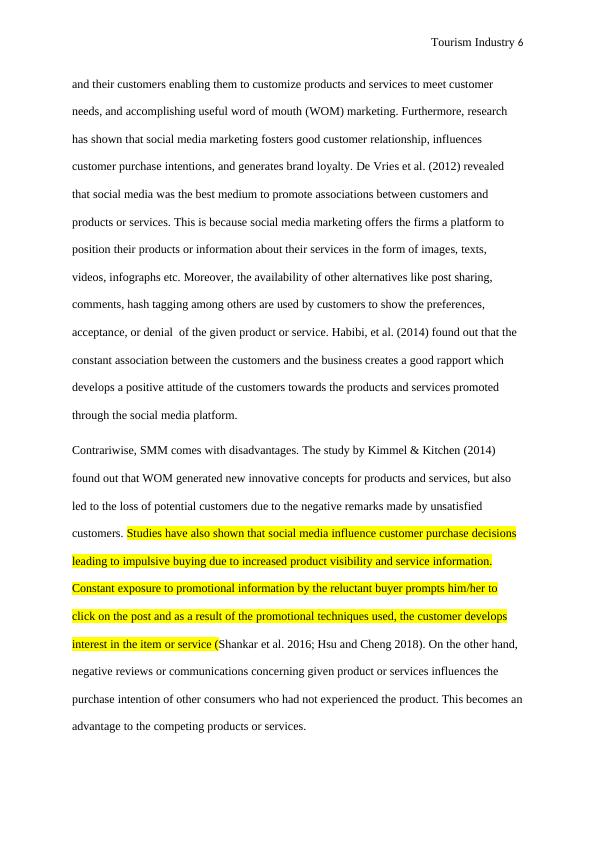
End of preview
Want to access all the pages? Upload your documents or become a member.
Related Documents
HI6008 Business Research | Social Medialg...
|12
|2325
|220
Advantages And Disadvantages of Social Networks Usage in Businesslg...
|18
|3376
|83
Social Media Usage of Business Reportlg...
|16
|2741
|779
Social Media in promotional activity of Starbuckslg...
|12
|2757
|69
Advantage and Disadvantage of Using Social Networklg...
|14
|2937
|107
HI6008 : Assignment Requirementslg...
|11
|3072
|204
